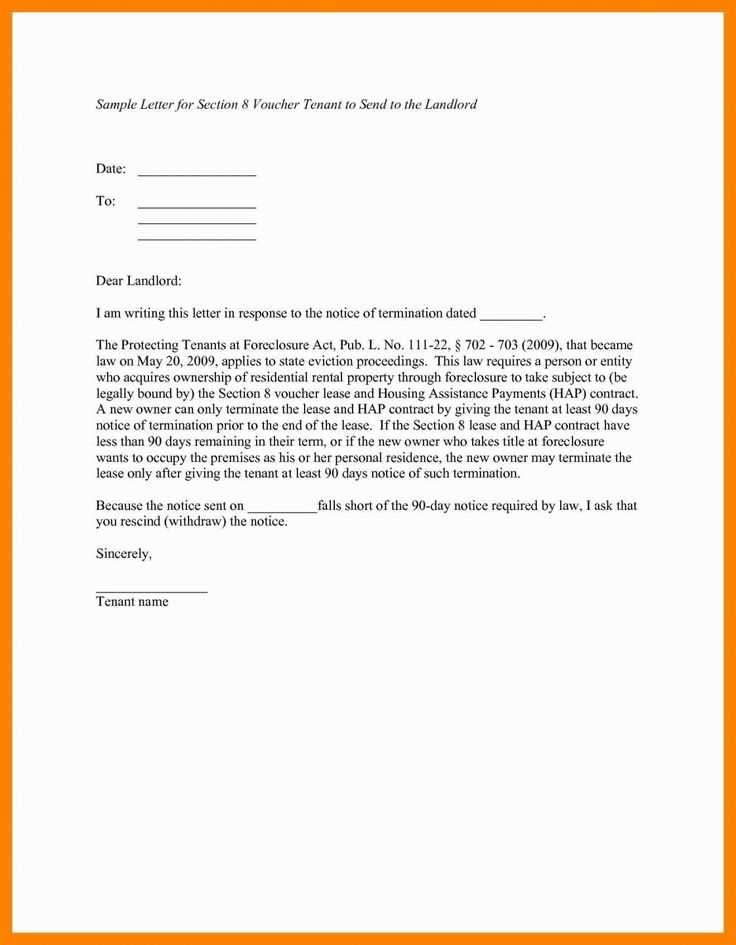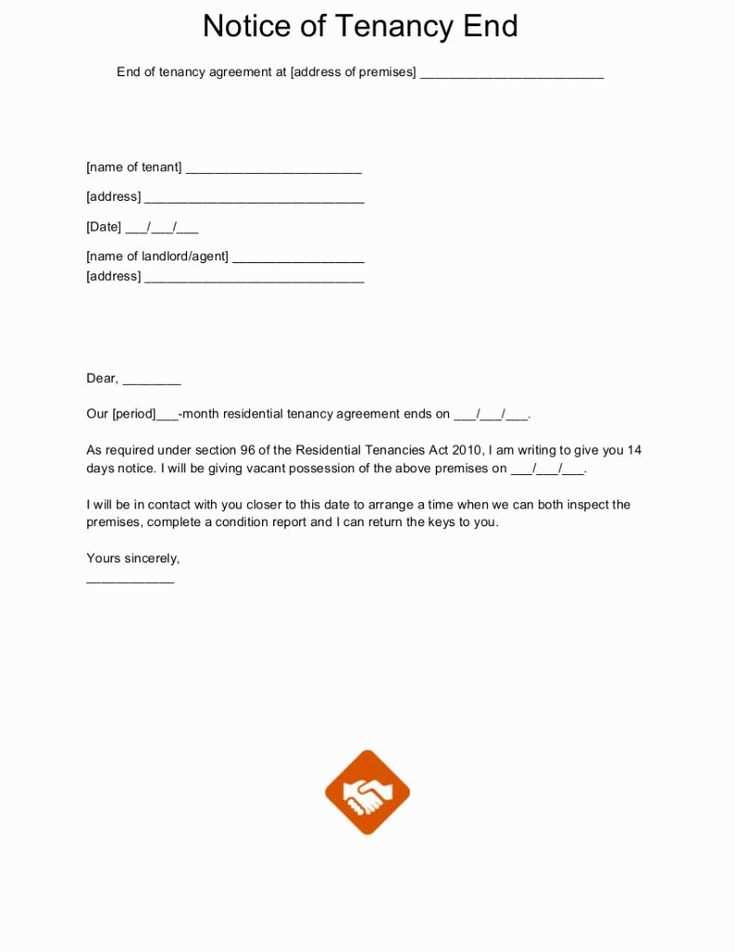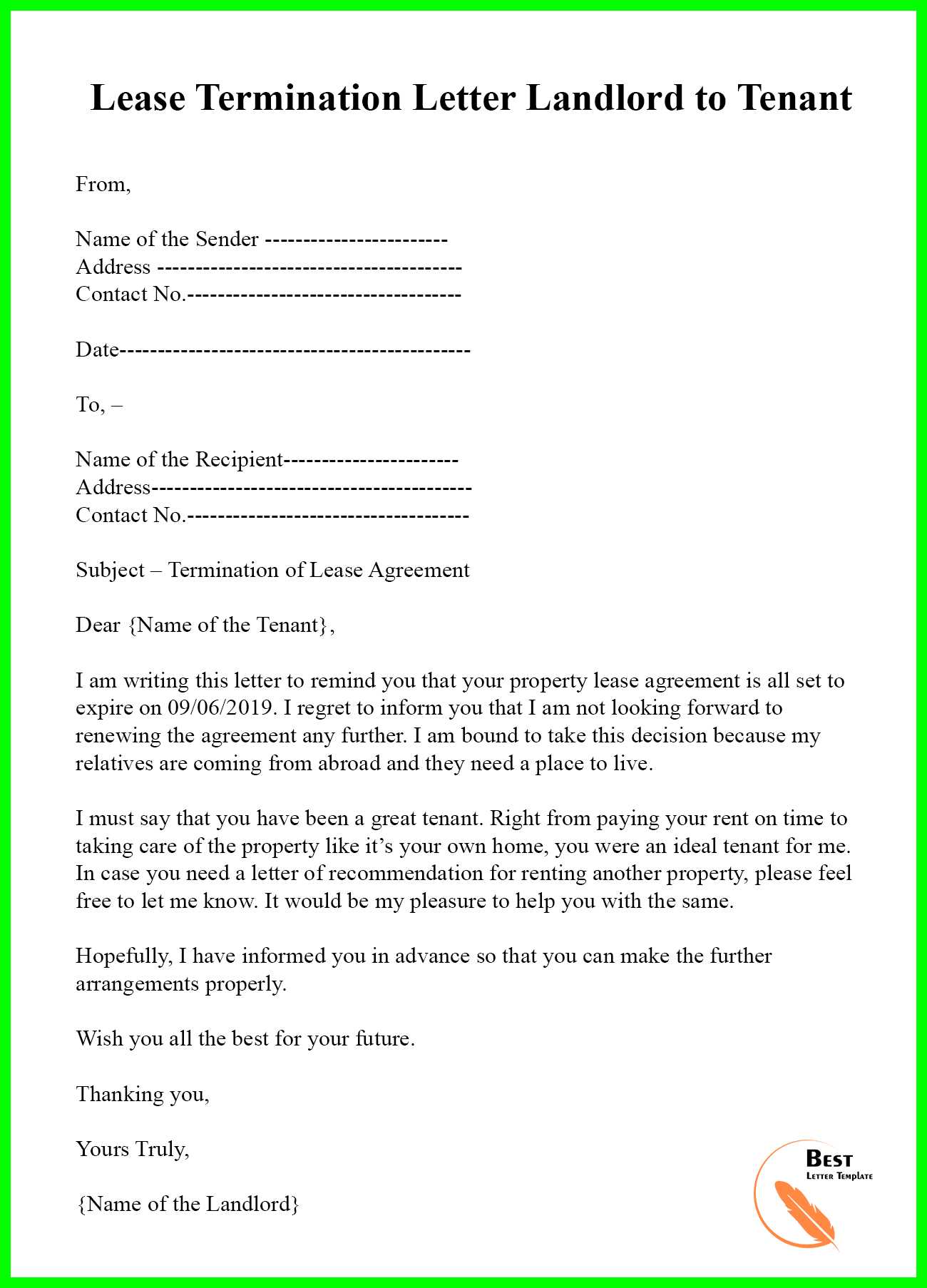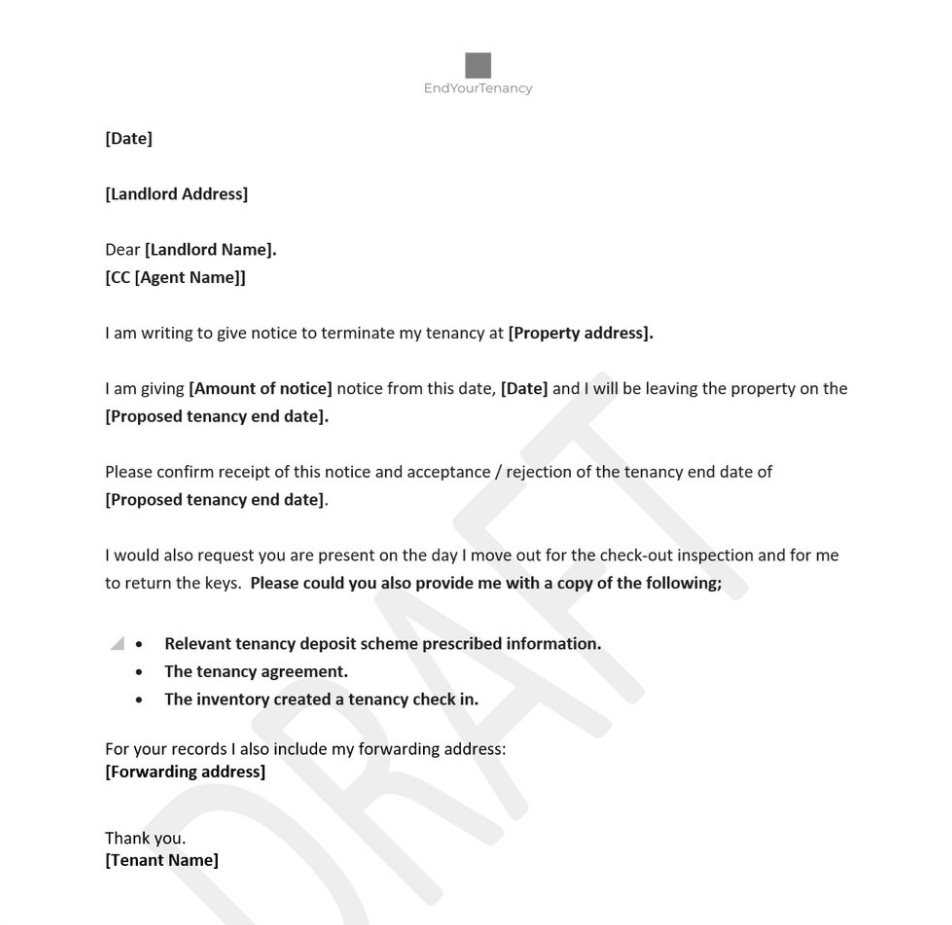Letter of Tenancy Notice Template for Renters and Landlords

When ending a rental arrangement, it is essential to have a written record of the decision. A properly drafted document ensures both parties are clear on the terms and the timeline, reducing the risk of misunderstanding. This communication should clearly outline the intent to conclude the rental contract, specifying necessary details and giving ample time for adjustment.
Key Elements to Include in the Document

For the communication to be effective, certain elements must be addressed. These details not only clarify the intent but also establish the terms for both parties moving forward.
- Recipient’s Information: Always include the full name and address of the person receiving the notification.
- Intent to End the Agreement: Clearly state the decision to conclude the rental relationship, including the expected date.
- Reason for Termination: While not always required, it’s helpful to provide a reason for the end of the agreement.
- Return of Property: Specify arrangements for returning keys, access cards, and any other rental property.
- Final Payment Details: Include any instructions regarding outstanding balances, utilities, or security deposits.
Common Mistakes to Avoid
While drafting this communication, it is important to avoid common pitfalls that could create confusion or delay the process.
- Unclear Language: Ambiguous wording can lead to misunderstandings. Be concise and specific.
- Missing Dates: Always provide clear timelines, including the exact date the agreement will end.
- Inadequate Notice: Be sure to adhere to any local legal requirements regarding how much notice must be given before the termination.
Sample Format for the Document

Below is a basic structure to help guide you through creating a clear, effective communication.
- Header: Include the date, your name, and the recipient’s details.
- Introduction: Clearly state your intention to end the rental arrangement.
- Main Body: Provide details like the end date, reason (if applicable), and other important information.
- Closing: Conclude with any final instructions for returning property or settling accounts.
By following this format, you ensure that all necessary information is conveyed while maintaining professionalism and clarity.
Legal Considerations
Before sending your communication, it’s crucial to be aware of any local laws governing rental terminations. Each jurisdiction may have specific requirements, such as notice periods or particular conditions that need to be met. Familiarize yourself with these to ensure that your action is legally sound and avoids complications.
Understanding Rental Agreement Termination Procedures
Ending a rental relationship involves more than just verbal communication. A structured document helps both parties clearly understand the expectations, timelines, and responsibilities involved. This form of communication ensures the process is smooth and legally compliant, providing a clear record of intent to both the tenant and landlord.
Why a Formal Notification is Essential
Without a proper written record, misunderstandings may arise. A formal communication serves as proof of intent, offering legal protection to both parties. It clearly outlines the terms of the conclusion, ensuring that both the tenant and landlord are aware of their obligations, such as returning keys or settling outstanding payments.
Steps to Create a Termination Document
Creating an effective document requires careful attention to detail. First, gather all necessary information, including the names and addresses of both parties. Then, clearly state the date the rental agreement will end. Ensure that all critical points, such as return procedures for property and final financial obligations, are addressed.
Important Details to Include in Your Document
A well-constructed document should contain specific elements, such as the end date of the rental period, the reason for termination (if applicable), and any remaining responsibilities like cleaning or repairs. It’s also crucial to mention the return of keys, access cards, or any rented items, as well as the resolution of financial matters like deposits and bills.
Common Errors in Rental Agreements
Errors in wording, missing dates, or vague statements can lead to confusion. Ensure the language is clear and unambiguous. Also, don’t forget to provide the required amount of notice as per local laws. Failure to do so can result in complications or even legal issues.
Avoiding Legal Issues During Drafting

Understanding local rental laws is crucial when drafting the document. Be sure to follow all regulations regarding notice periods and termination conditions. A well-drafted document that complies with legal requirements protects both the tenant and landlord from potential disputes.